Travelling explorers may come to Las Niñas Reservoir at any time, to a natural spot on the southern slopes of Gran Canaria. It belongs to the municipality of Tejeda and is located in an area known as Majada Alta. It is part of the network of Biosphere Reserve areas and is probably one of the best locations for bird watching on the island. The most interesting part of it is that Las Niñas Reservoir is a fabulous place, in both senses of the term.
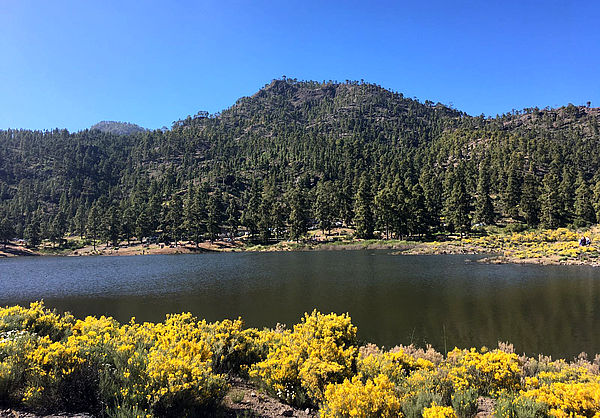
On the one hand, it is a fabulous place for walking around and looking at the pine trees, the fallen rain water which has now become a still lake. It is also fabulous for listening to all the birds that flutter by. This is more than enough to get a sense of the extraordinary and uncommon nature of this particular corner of the island.
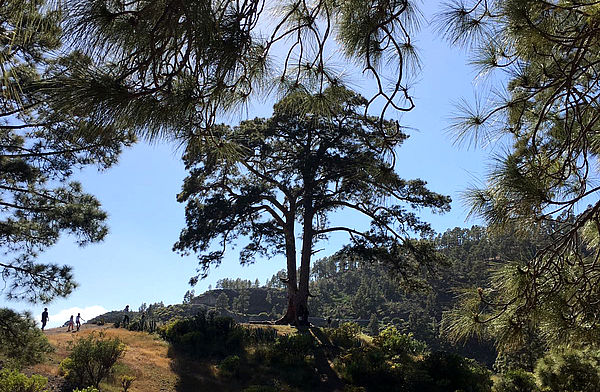
It is also a ‘fable-ous’ site for other reasons. Among these is the so called Casandra tree, a four-century old pine tree which takes us back to legend. It is easy to spot, due to its majestic presence and longevity. Although there is no official version, it is generally agreed that it takes its name from a young 15 year old girl who liked to spend pleasant hours in the company of young Iván. She was the envy of the village and the subject of nasty chit-chat, and having placed the family’s honour in doubt they called her a witch. They then burned her at the same tree where her pure, naive and natural sentiments were read out like a devil’s curse. However this is nothing more than legend and an old local tale, which we don’t know if it is real or a purely ingenious fable. But what is strange is that the pine tree has survived several fires and strikes a peculiar figure, making it so easily recognizable in this huge area, near to this fine setting blessed with water.
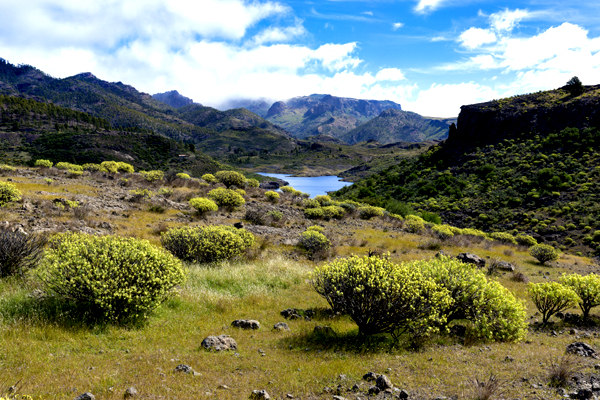
It is common to see the Pico Picapinos Woodpecker (Dendrocopos major thanerii) flying around the reservoir and surrounding areas, an island sub-species which is a sign of the good state of conservation of the woodlands. It is a "winged jewel" with which we can also come across in the Canary pine forests at the Inagua, Ojeda and Pajonales Integral Reserves. It is the most common of the woodpecker family and its song can translated as a strong, shrill “tweek” sound, which it repeats at irregular intervals. It also emits non-vocal sounds for communication purposes, this being the characteristic drumming noise it generates as it hammers away on tree trunks at great speed with its beak.
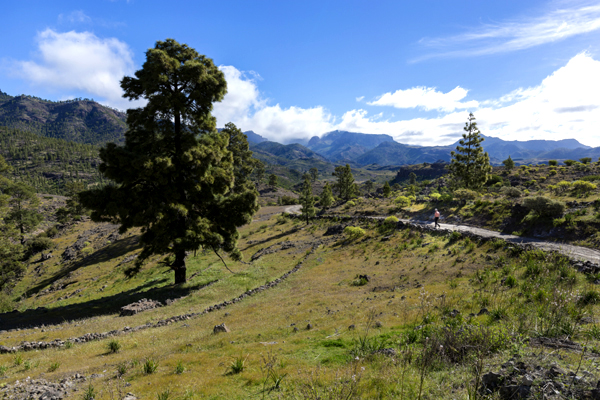
A stroll around the reservoir can provide you with the opportunity to see it flying around with its vivid colours, and if you are not lucky enough to spot one, just listen out for the shrill cry of the Pico Picapinos, near to the water provided by the season’s rainfall, under the pines that provide shade for the picnic area.
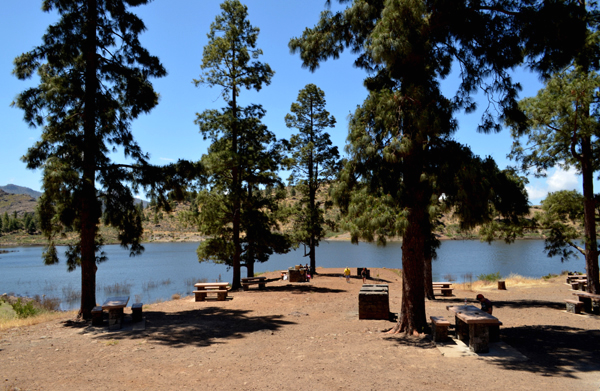
On the following link you can check out the characteristics of the area, as well as conditions of use for the recreational site, which includes a campsite.
It is an hour and a half’s drive if we are leaving from the capital, Las Palmas de Gran Canaria. We take the GC 15 main road and go up into the interior through Santa Brígida and on to San Mateo. We then join the GC 600 and head towards 'Roque Nublo', where we take the turning off to the GC 605, which will take us straight to the Las Niñas Reservoir. Follow this link for how to get there by bus (Guagua).
- Tejeda: just 45 minutes away we come to one of the prettiest villages in Spain. It is a recognition that Tejeda has obtained through the national association that promotes places of great beauty "which ooze history and culture in equal amounts, towns where tradition captures the imagination of travellers".
- Roque Nublo: this is one of the most emblematic natural monuments on the island. The rock is of volcanic origin, and rises eighty metres above its base and some 1,813 metres above sea level. It is a former cult site for aborigenes, and its surrounding area was declared a protected natural area in 1987 and a rural park seven years later.
